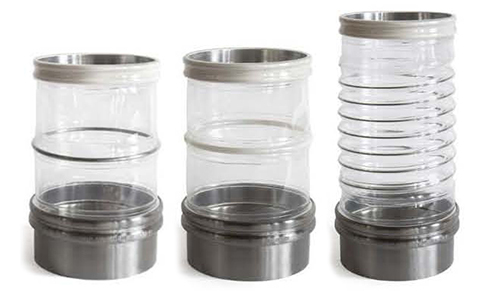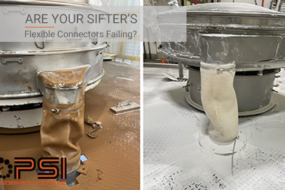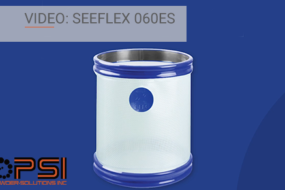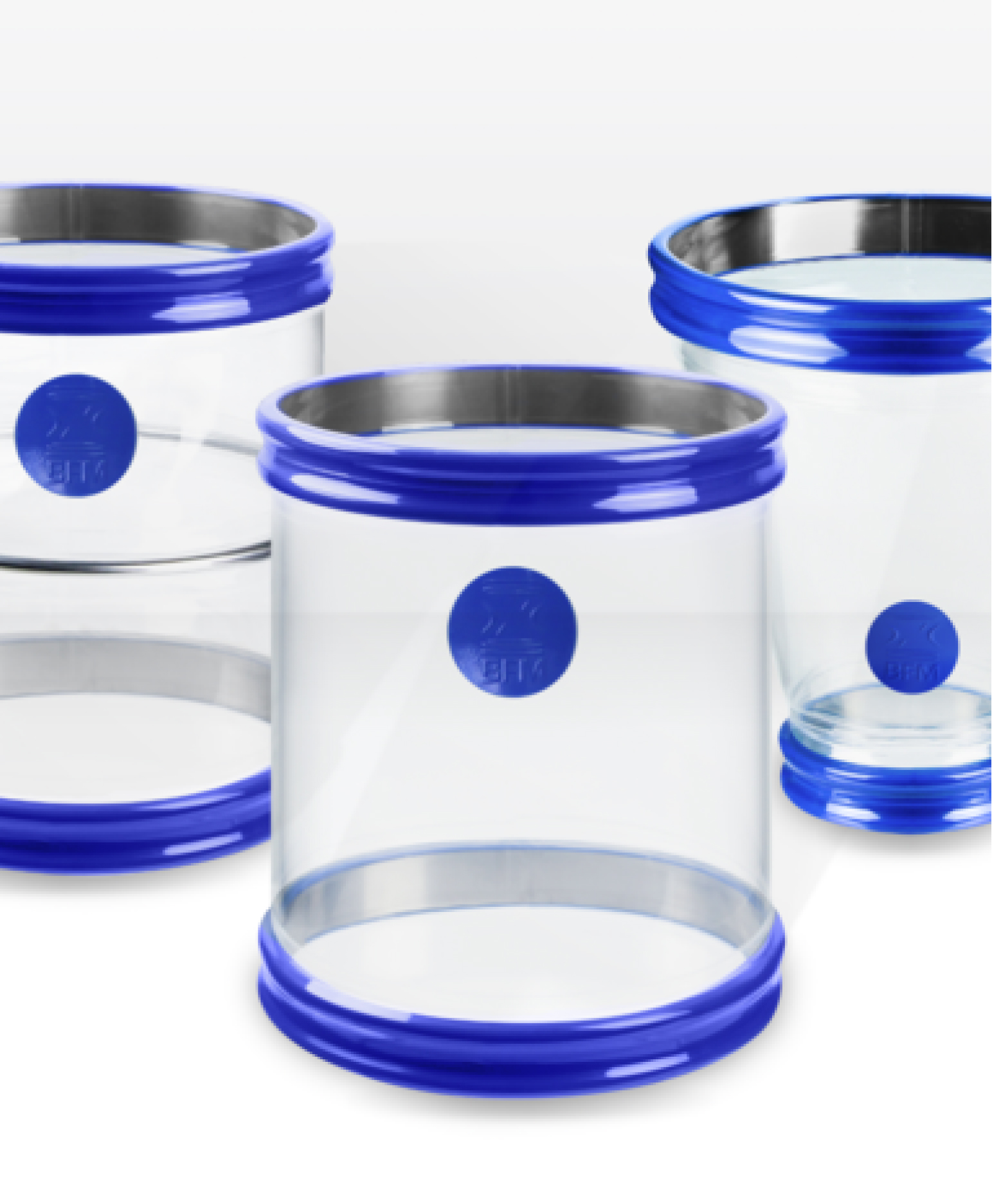Integrated Rings for BFM fitting
Rings can be integrated into BFM fittings when additional support may be necessary. Plastic or stainless steel rings are spaced throughout sleeves to avoid sleeve collapse because of sleeve length, vacuum or movement. The material type, locations, and applications will vary for each installation, so to make it less confusing, we break down some details to help understand when and where to use different products.
When considering if rings are the right solution for you, one thing to note is the length of your sleeve. Rings are typically placed every 4” requiring at least an 8” long sleeve. A 6” sleeve is the only sleeve where it can be placed with a 3” spacing.
Plastic Rings
Many times sleeves going through metal detectors are required to be longer to accommodate connecting the sleeve before the metal detector and connecting with the equipment below. Typically, we’d recommend rings so that the larger sleeve doesn’t collapse, but in this case, plastic rings are a great solution versus the standard stainless steel rings.
Plastic rings are the only option in sleeve diameters of 22” and above. Plastic rings at that large size ensure the sleeve stays light and continues to function properly in the installation.
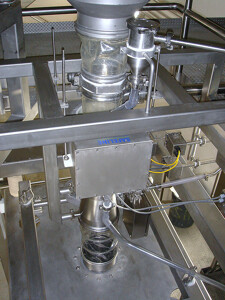

Stainless Steel Rings
Stainless steel rings are commonly added to BFM fittings when plastic rings are not required or recommended. There are a few instances where you may want to consider a BFM fitting sleeve with stainless steel rings.
- Negative Pressure (vacuum): To avoid the connector from collapsing in on itself in a negative pressure situation
- Long connectors: To serve as an anti-collapsing tool, long sleeves may have stainless steel rings integrated for added protection
- Telescoping Applications: When a BFM fitting is installed in a telescoping application (like in Bulk Bag Unloader applications)

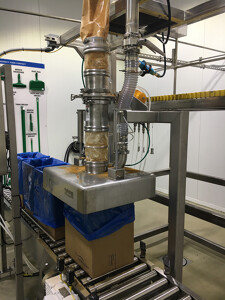
When to Not Use Rings
There are certain instances in which rings may not be a good option.
- Sleeve is too short: If your sleeve is less than 6” long, it does not have room in the sleeve material to properly integrate a ring
- Tapered sleeve: if you’re using a tapered sleeve for your equipment, we are unable to produce a sleeve with integrated rings
- 1,050mm (41 1/3 ”) diameter or larger sleeve
Materials
With so many material options available, it’s important to note which sleeves can successfully include rings and which ones cannot. Here is the list of those that are compatible for ring integration:
- 040E
- 020E
- 040AS
- LM4
- LM3
- Teflex (brown)
- Caps/overs container
- Tool release (maximum diameter 650mm)
These materials are not suitable for ring integration.
- 060ES
- Kevlar/Blackout Cover
When it comes to selecting the sleeve material for your application, always consider discussing your specific requirements with our experts.
Flexi Sleeve
In your flexible connector research, you may have also heard of the Flexi sleeve. There are three varieties available; light, earthed, and standard flexi sleeves. Flexi BFM fittings differ from rings installed in sleeves because a Flexi sleeve integrates one continuous stainless steel coil versus separate rings.
There are a few key things to note when considering a flexi sleeve for your installation:
- Can hold vacuum without sleeve collapsing in (similar to the rings listed above)
- Holds true to diameter size vs. rings under compression (telescoping applications)
- Maximum diameter is 12” (so any requirements above 12” is not available)
- Functions best in more extreme offset situations, as seen below
As you can see, there are many options with BFM fittings when it comes to reinforcement. Rings and flexi connectors can support installations with movement, vacuum and assist in avoiding sleeve collapse as sleeves increase in length. Our BFM fitting experts are always available to decipher which sleeve material & size would be appropriate for your processing facility.
Fill out this quick form to discuss your application with a BFM fitting expert!

